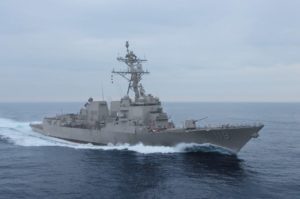
Top Navy officials this week explained the next class of destroyers, called DDG(X), will have the energy and space capabilities to field lasers, hypersonic missiles, sophisticated radars, and future upgrades. “This platform will provide additional space, weight, power and cooling required for relevancy. DDG(X) will give us considerable upgrades from the addition of larger, more dynamic missiles that will hold targets at risk in longer range,” Vice Adm. James Kilby, Deputy Chief of Naval Operations for Warfighting Requirements and Capabilities, N9,…

 By
By 











